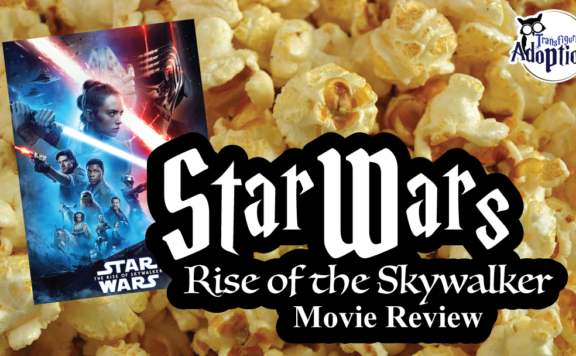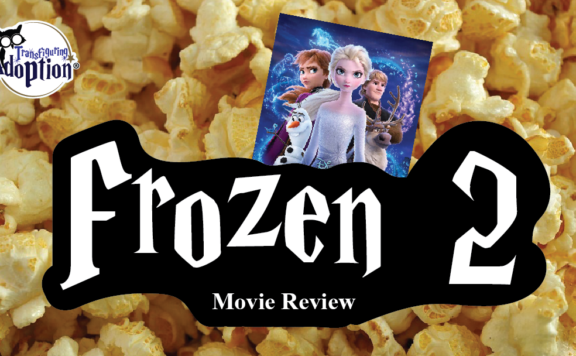Discussion Guide:
- How does Renee communicate without using words from her mouth?
Caregiver Note: Renee is depicted as having non-verbal Autism Spectrum Disorder and as a result uses a variety of communications, including vocal tones, gesturing, her phone soundboard, and pictures on her phone. A caregiver with a child from the child welfare system may relate to Marcus’ frustration with being unable to communicate with traditional methods. In introductory foster parent classes, foster parents are taught that often children from the child welfare system lack the social and emotional development to “use their words” when expressing needs. Just like Marcus, it is often up to the caregiver to use behavior as a way to decipher needs and develop more give-and-take to communicate, especially when a child is overwhelmed. Children who struggle with finding the right words in this way, may relate to Renee. Children may also relate to Marcus in being unable to understand others. - What was different between how Marcus and the camp counselor communicated with Renee at the dock?
Caregiver Note: Marcus attempted to communicate with Renee how he would address most of his peers. Marcus reached out for a fist bump, came down partway to her level (but not eye level, somewhat over her), and spoke to her with a louder tone verbally. Marcus was not considering in the moment what physical contact may not be welcomed and the feeling of being stood over may be overwhelming for Renee while she processed his words. If you have ever tried to have conversation with someone and had them stand over you, that probably felt less like a conversation and more threatening as the puts the seated person in a vulnerable position. Along with Marcus’ impatient body language and words, this was not a very welcoming introduction for someone who finds sensations of touch and sound to be amplified.In comparison, the camp counselor had clearly learned these lessons and developed a different communication style with Renee than he had with Marcus. When addressing Renee, the camp counselor can be seen to come down to eye level with Renee, not reaching out to touch her, and using a softer, encouraging tone while addressing her directly and when talking about her. He also used the repetition of the words “woof” like the sensory program on her phone to reassure her as this was something that communicated security and reassurance to her.Again, caregivers should note that each child we interact with will have different styles and means for communication dependent on their needs. This is a wonderful opportunity to talk to children about modifying how we communicate with different people and how communication can be improved between caregiver and child. - Why did Renee tell Marcus she needed to use the bathroom when she really wanted to touch the water plants?
Caregiver Note: Due to the limits in communication Renee has with her new acquaintance, Marcus, Renee had to get a little creative to ask Marcus to maneuver the canoe close to the cattails. After some extra gestures Marcus was able to use the non-verbal communications Renee was giving him to realize she needed soft sensory stimulation (i.e. – quiet sound of the plants moving, the tickling texture of the plants, gentle movements in the canoe, etc.) rather than the overwhelming jerking from Marcus’ paddle techniques or the loud water and metal sounds that came along with his stunts. - Have you had a time where it was hard to explain what you needed to someone?
Caregiver Note: Children who have endured trauma will certainly relate to this predicament. Children who have endured trauma to fulfill their needs to survive develop behaviors that have helped them survive in environments where verbal language was not enough. This may look like a child hiding dinner leftovers in their room though they are given three meals and multiple snacks a day. The need isn’t really food in that moment when you consider that that child may have experienced true hunger. Not I’m-watching-Netflix-and-need-a-snack hunger but true, painful hunger that activates fight or flight. What that child seeks in that moment is food security, knowing that they are safe even if the meals and snacks suddenly stop.Help your child think of ways they need help with communication sometimes, especially when they are afraid or angry. There’s a large chance that child was not taught to connect feelings to behavior and may not completely realize why they do these things. - Why did Renee get upset when Marcus took her in the dark tunnel? Why did Marcus need to give her space after the boating experience?
Caregiver Note: Though Marcus meant well, unfortunately the tunnel echoed and amplified all of that sound and overwhelmed Renee’s sensitive ears. This was further overwhelmed by her own terrified yelling, Marcus’ yelling, the boat movement becoming jerky, and the loud motor boat whizzing by them. In that moment, Renee did not feel safe and acted out in her overwhelm and inability to process all that sound.There may be sounds and sensations we barely notice that could trigger children from the child welfare system in ways we would never expect. A new dress could trigger the memory of parents’ domestic violence. Loud laughter at a dinner table could signal impending harm for a small child, who throws their hands up in fear in response to a simple joke. Caregivers need to remember that, like Renee, we may need to be extra mindful of our children’s internal experiences in response to what is happening around them and to use their behavior as indicators how we can support them.As Marcus realized after a while, Renee was not going to be able to effectively communicate at all while she was overwhelmed and afraid and needed the space to come back to calm. Sometimes we as caregivers also need to allow for that space, and turn down the anxious feelings in our own minds to be better able to read our children’s behavior and meet them at their need. - How did Marcus and Renee’s experience change when Marcus chose to communicate calmly that he would sit and wait for Renee to tell him what she needed?
Caregiver Note: When the human brain is in fight or flight, the control runs straight to the limbic system and causes us to act quickly. This is great if we meet a dangerous animal in the woods, but not very helpful when we are attending a doctor appointment or going to a court appointment with a child in care. We have to remember as caregivers that using the executive functioning of the brain is extremely difficult under great stress, especially for a child who has not learned how to regulate their emotions and has practiced these skills. Just like Marcus, we have to remember that learning is not going to happen in the midst of chaos. It is after Renee is given the space to expend all that pent up energy and emotion and then allowed to communicate on her own level that Marcus is able to relate to Renee and better appreciate the things that make her unique. Renee’s meltdown becomes less scary and becomes an opportunity to get to know her better to help her succeed. And after Renee is calm and they are able to relate to one another they are able to move forward and continue to have fun. A meltdown did not ruin the entire experience of canoeing or developing their relationship. In fact, as we see at the end, Marcus invited Renee out for another loop around the water again later! It is important for caregivers to remember too that you and your child can come out of conflict and meltdowns with a better understanding of one another and return to having fun. Building relationships take time and fun, don’t feel like you need to rush through the process. It took however many years for your child learn to use behavior to communicate, it may take just as long for you both to relate to one another and adjust communication habits. - When things become overwhelming and scary, how can I help you return to calm like Marcus helped Renee?
Caregiver Note: This is a question that will help you talk to your child by having an example they have visually seen. And just like Marcus and Renee, not every future communication is going to be perfectly executed and understood but grace can be provided to allow for mistakes and further learning, and ultimately bonding with feelings of understanding and security.
- ACTIVITY: Woof Woof Woof
Caregiver Note: In this activity you will need a piece of cardboard, coloring mediums of choice, scissors, paper, and glue. In this activity you will make a smartphone out of the cardboard piece by cutting out a rectangle. Make the phone in this case look like it has a screen on both sides. On one side of the phone, have your child come up with a symbol and represents “we’re all good here” like the positive association Renee has with the “woof woof woof” sound and soundbar. On the opposite side, have your child come up with something that symbolizes feeling overwhelmed. While talking and building your beautiful phones, use this as an opportunity to develop a quick-code so your child can communicate to you in the future that they need your support when words are difficult to access for their overwhelmed brain. This is a fantastic resource since our language use is dictated by the upper brain area… which is not in the driver’s seat when a child is in fight or flight mode. Talk about different strategies too that you may employ when they signal feeling overwhelm and needed help to return to calm.




